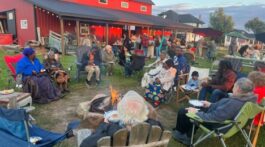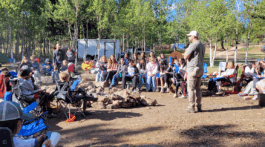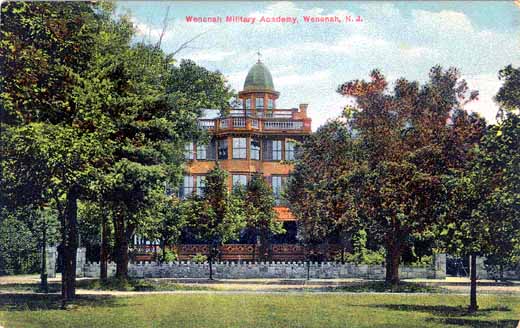Hundreds of young Adventist men served in the United States Armed Forces between 1917 and 1919, both as combatants and non-combatants. Most of them were drafted, but a few volunteered. Two such soldiers were Dr. Arthur John Holeton and his brother, Rieben H. Holeton.
Arthur Holeton was born on March 21, 1895, in Philadelphia, Pennsylvania, although his family lived in Wenonah, New Jersey–a resort town southeast of Philadelphia. His parents, John H. and Adele M. Rieben Holeton, were Methodists before his birth. John Holeton (1863-1946) held a variety of jobs over the years including oysterman, green grocer, liveryman, dairyman, and purveyor of coal and wood. Adele M. Rieben (1870-1935) was born in Switzerland and came to America in 1872 with her parents, Johannes and Maria Reiben, two older sisters, and two older brothers.
It is unknown when the Holetons joined the Seventh-day Adventist Church, or even if John Holeton ever joined. In 1917, Adele and her daughter, Marie Grace, started a company of African Americans in Jericho, New Jersey, not far from their home in Wenonah. Adele and Marie were also charter members of the Woodbury, New Jersey, Adventist church in 1919. Marie later married Dr. Victor Barrows.
Education was important to the Holeton family. Arthur Holeton’s younger brother, Rieben, attended Washington Missionary College (Washington Adventist University) in 1911. Holeton himself enrolled at Wenonah Military Academy, which offered the best education in the area. Following his 1912 graduation from the military academy, he enrolled in the Loma Linda College of Medial Evangelists (CME). There he also met Alice J. Mussen, an obstetric nurse, whom he married on September 23, 1915. Holeton graduated from CME on May 31, 1917, and passed his California licensure exam, earning a class A license.
From all appearances, Holeton was set for a brilliant career, beginning with an internship the San Diego County Hospital from July 1917 to June 1918. But then World War I intervened. Both Holeton brothers would eventually join the United States Army.
By all rights, Rieben H. Holeton was the brother the family would have worried about. A major in Battery “B” of the 112th Heavy Field Artillery, a National Guard unit, he sailed for France on June 28, 1918. He returned to New Jersey in April 1919 aboard a convalescent ship and recovering from pneumonia. He survived to marry Clara L. Hohlweg (after her death in 1942, he married Evelyn Cornelius), become a welder, and, during World War II, worked in the Willow Run defense plant near Detroit, Michigan.
As a physician, Arthur Holeton was also an officer. Commissioned a first lieutenant in the spring of 1918, he trained at Camp Greenleaf, Georgia, where he completed a special course in new radiology. This training positioned him for a position in radiology at White Memorial Hospital, which he intended to take up at the conclusion of his military service. On October 26, 1918, he sailed from New York City headed to France with Evacuation Hospital No. 29. He would have arrived in Europe very close to the time the armistice was signed on November 11.
For Holeton, his assignment in Europe was a deeply spiritual time. He wrote home:
“I want to send you a message of cheer and courage. Trust in the Lord and obey; pray eternally, vigilantly, and be thankful for all the good things, forgetting the adverse circumstances that do and will continue to come. I have learned many real practical lessons since I have been here, and I am going to put them in practice. Seeing what many have sacrificed on the fields of battle, it spurs me on to want to show some real sacrifice for the Master. They have done it for a worldly glory; we do it for an eternal glory. I am striving to be more thoughtful of others, and by the Lord’s help I am getting at this thing.”
Then, just when all appeared to be safe, tragedy struck. On December 21, 1918, Holeton was among a group of officers boarding a train in Bordeaux. He was the last man to board and the train started moving before he was fully inside. Unfortunately, there was a tunnel just beyond the station, which the train entered as it began moving. Holeton was killed instantly.
Immediately after his death, Holeton was buried in Bordeaux with full military honors. On February 1, 1919, his life was honored at a memorial service held in Loma Linda, California, where Dr. Percy T. Magan spoke, remembering Holeton as a “cheerful” and “stalwart Christian.” In November 1920, Holeton’s body was returned to the United States where he was reburied, with a military funeral in which Carlyle B. Haynes participated, on the grounds of the Wenonah Military Academy.
This is just one of the many stories of Adventist soldiers in World War I that should not be forgotten. I am currently collecting names and stories of World War I Adventist soldiers. If one of these soldiers was a member of your family, please share his story with me.










